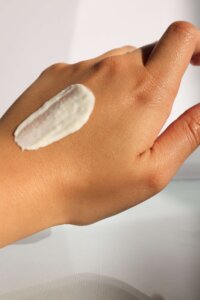The Science of Sunscreen

In the world of skincare, sunscreen stands tall as a non-negotiable essential. Whether it’s a sunny day at the beach or a cloudy afternoon stroll, protecting our skin from harmful UV rays is crucial. Understanding the science behind sunscreen is key to making informed choices about the products we use. In this blog post, we’ll delve into the world of SPF, UVA, and UVB protection to shed light on the science of sunscreen and help you make the best decisions for your skin.
SPF
Sun Protection Factor Sun Protection Factor, commonly known as SPF, is a measurement of a sunscreen’s effectiveness in blocking out UVB rays. UVB rays are responsible for causing sunburn and are a major contributor to skin cancer. The SPF rating on a sunscreen bottle indicates the level of protection it offers against UVB rays. For example, an SPF 30 sunscreen allows you to stay in the sun 30 times longer than you would without protection before getting sunburned.
It’s important to note that SPF only refers to UVB protection and does not directly indicate the level of protection against UVA rays. Therefore, a broad-spectrum sunscreen that protects against both UVA and UVB rays is recommended for comprehensive sun protection.
UVA Protection
Aging Rays UVA rays penetrate deep into the skin, leading to premature aging, wrinkles, and other signs of photoaging. They can even pass through glass, making it essential to wear sunscreen even indoors or while driving. UVA protection is denoted by the term “broad spectrum” on sunscreen labels. Look for sunscreens that offer broad-spectrum protection to shield your skin from the aging effects of UVA rays.
UVB Protection
Burning Rays UVB rays are shorter and primarily affect the outer layer of the skin, causing sunburn. They are more intense during midday and can vary in intensity depending on your location and time of year. A sunscreen with a higher SPF will provide greater UVB protection. It’s crucial to remember that even on cloudy days, UVB rays can still reach your skin, so wearing sunscreen should be a year-round habit.
Ingredients that Offer Sun Protection
The active ingredients in sunscreen play a vital role in shielding your skin from harmful UV rays. Some common ingredients to look for include:
- Zinc Oxide: A physical sunscreen ingredient that forms a protective barrier on the skin, reflecting both UVA and UVB rays.
- Titanium Dioxide: Another physical sunscreen ingredient that works similarly to zinc oxide, providing broad-spectrum protection.
- Avobenzone: A chemical sunscreen ingredient that absorbs UVA rays, offering broad-spectrum protection when combined with other chemicals.
- Octinoxate: A chemical sunscreen ingredient that absorbs UVB rays, often used in conjunction with other active ingredients.

Choosing the Right Sunscreen
When selecting a sunscreen, consider your skin type, lifestyle, and specific needs. If you have sensitive skin, look for sunscreens labeled as hypoallergenic or formulated for sensitive skin. Water-resistant formulas are ideal for outdoor activities or swimming.
Additionally, ensure that you apply sunscreen generously and reapply every two hours, or more frequently if sweating or swimming. Remember to cover all exposed areas, including your face, ears, neck, and any other skin that may be exposed to the sun.
Conclusion
Understanding the science behind sunscreen empowers you to make informed decisions when it comes to protecting your skin. Remember to choose a broad-spectrum sunscreen with an appropriate SPF, ensuring comprehensive defense against both UVA and UVB rays. Prioritize sun protection every day, regardless of the weather, to keep your skin healthy, youthful, and shielded from the harmful effects of the sun.

